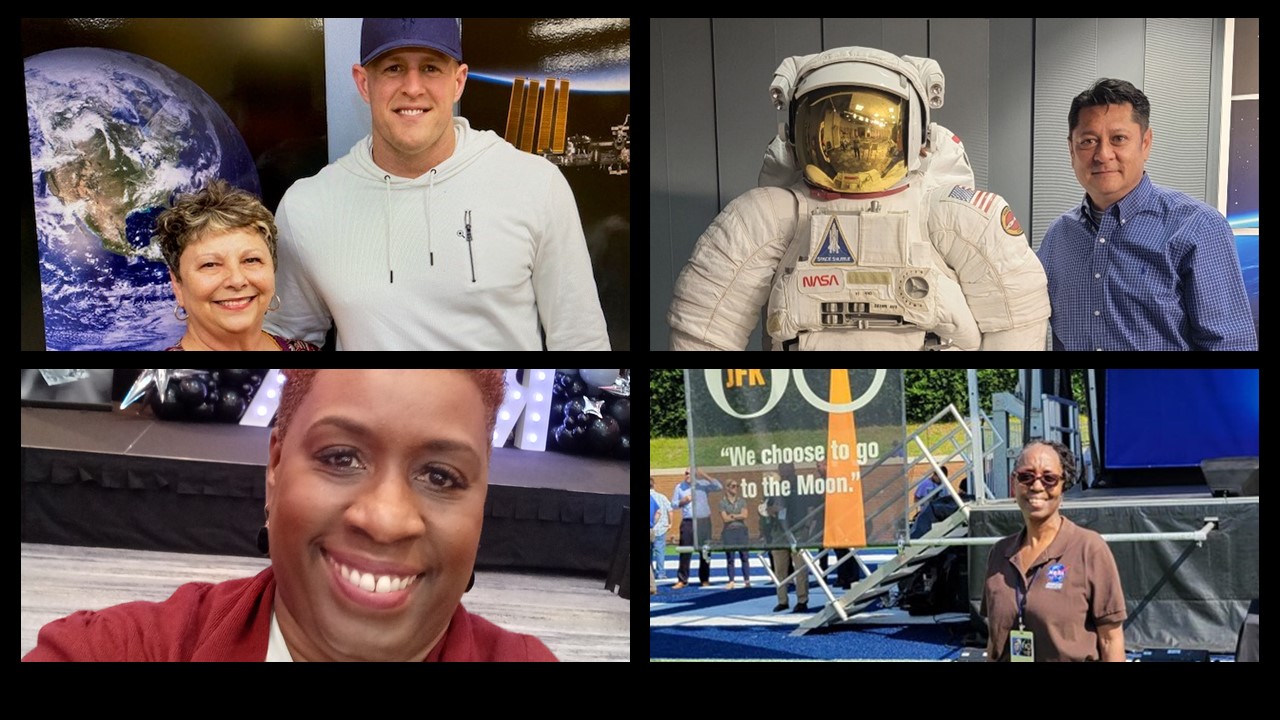For every NASA astronaut who serves as the public face of human spaceflight, there are thousands of people working behind the scenes to make the agency’s missions a success. Even the smallest tasks impact NASA’s ability to conduct research and innovate for the benefit of humanity.
The team of administrative assistants and secretaries working at the Johnson Space Center in Houston are well aware of this fact.
Whether coordinating meetings, arranging travel or preparing materials and information for Johnson’s leaders, this team of more than 90 people prides themselves on providing critical support to the agency’s programs and managers. “We work hand-in-hand with management to get them where they need to go and make sure they have everything they need to continue their important work,” said Carla Burnett, a senior assistant in the Center Director’s Office who also oversees all of Johnson’s administrative staff.
Burnett has parlayed her longtime passion for administrative work into a 41-year career at Johnson. She was just a child when she began working in the astronaut office mailroom — an opportunity that came to her through her high school’s Office Education Program. “As a mild-mannered and soft-spoken high school student, sitting there with the astronauts and going through all their fan mail — I was completely blown away! It was an absolute honor,” she said. That experience, and being named her high school’s Office Education Student of the Year, confirmed to Burnett that administrative work was the right career path for her. She said loyalty and perseverance took her from the astronaut office mailroom to a position as crew secretary for two space shuttle flights. “Being a servant and helping others is what I really love about administrative work,” she said.
Today, Burnett supports Johnson’s senior leaders and serves as a central resource for the rest of the administrative team. “They are all very independent and work within their own organizations,” she explained, but she also coordinates team-wide meetings, celebrations or trainings and is always available to answer questions. “We consistently work as a tight-knit team. We are competent and, might I add, exceptional at what we do because we do it for the benefit and success of our Johnson family, NASA and a variety of communities!”
Burnett’s commitment to service is reflected throughout the administrative team, as is her commitment to caring for others. Edwina Gaines, administrative assistant for the Extravehicular Activity and Human Surface Mobility program, said the most rewarding aspects of her job are being an instrument for team success and having the opportunity to build long-lasting friendships. “That connection with people is important,” she said. “It’s important for me to know who I’m supporting or working with.”
Gaines joined the Johnson team nearly 20 years ago as a contract worker, thanks to an opportunity that arose through her volunteer work at the church. A church partner, the Houston Area Urban League, helped a NASA subcontractor fill a secretary position through the Small Business Administration’s HUBZone program. Gaines got the job.
Since then, she has supported four programs and two institutional organizations, getting to know several agency leaders quite well. Gaines said she paid attention to small details — such as which managers preferred printed materials over presentations, how they organized their offices and when they typically took a coffee break or something to eat — and tried to stay one step ahead of them. She recalled one time when she realized a manager hadn’t taken a break in five hours and brought her a drink. “It’s about taking care of the people who are accomplishing the mission. If you don’t take care of yourself, you can’t accomplish the mission,” she said.
Rick Pettis, administrative officer for the Center Operations Directorate, appreciates being part of a great team. Pettis has worked at Johnson since 2014, when he retired from the U.S. Navy after 23 years. “I enjoy helping people solve problems,” he said. “Every day, someone calls me and asks, ‘How do I get this done?'”
The work of the administrative team brings other highlights. “When I met my first astronaut, I was in awe,” said Dottie Workman, a secretary who supports Johnson’s office of external relations. “I couldn’t believe that someone as important was walking across campus like everyone else. He was so nice — he shook my hand and took the time to talk to me.”
Workman has been a public servant for 52 years, 29 of them with Johnson. “My career has taken me all over the United States and to Germany,” she said. “When my son was in the military and stationed at Fort Sam Houston in San Antonio, he said, ‘Mom, why don’t you move to Texas?’ I didn’t have a good reason to say no, so here I am!”
Aside from meeting and interacting with astronauts, Workman’s favorite thing is introducing NASA to her family and friends. “It’s always exciting to see their reaction,” she said.
Burnett is grateful for a united team that understands the value of their work. “I am grateful to work with a group of professionals who understand the importance of moving today’s men and women into the next generation of space,” she said. “We are proud of Artemis!”

